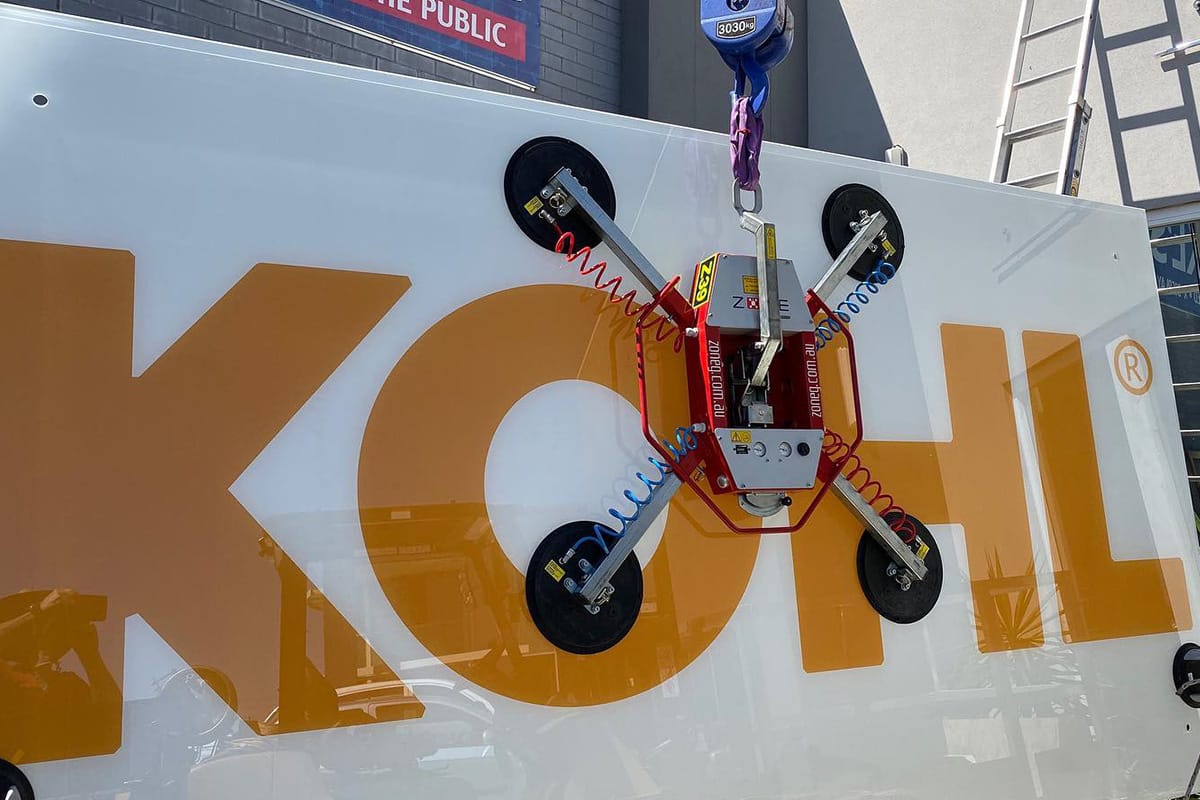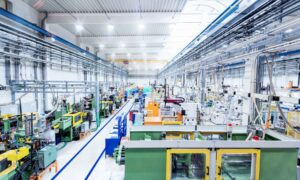Vacuum lifters have become essential in workplaces where heavy, flat, or fragile materials need to be lifted and moved safely. From sprawling construction sites to high-precision manufacturing floors, these devices are redefining standards for efficiency and workplace safety. For professionals working with sheets of glass, metal, stone, or other non-porous materials, understanding the range of vacuum lifters available and knowing which system best suits a specific application can have a significant impact on productivity, quality, and risk management.
Understanding Vacuum Lifters
At their core, vacuum lifters use suction pads powered by vacuum pumps to grip non-porous materials. The vacuum creates a powerful seal, allowing a single operator or automated system to lift, rotate, tilt, and precisely place heavy sheets with minimal physical effort. Beyond simply lifting, many units allow controlled manipulation, an essential feature when upholstering the facade of a skyscraper with glass panes or installing oversized stone slabs.
Classifications and Innovations
Vacuum lifters feature a range of specialized devices, each tailored to different industry needs. In recent years, innovation has surged. Features once reserved for advanced robotics, such as precision maneuvering and remote control, are now standard in many lifters. Let’s explore the primary categories and examine their strengths, limitations, and best use cases.
Smartlift Glazing Robots
Smartlift glazing robots have gained a loyal following among glaziers and facade installers who regularly work with glass, windows, and other architectural panels. These are versatile, self-propelled machines that blend compact form with impressive lifting power, making them suitable for both site and factory tasks.
Smartlift’s design prioritizes maneuverability and operator control. Models like the SL208 or SL408 can be easily transported in a van, while larger models, such as the SL1008, comfortably manage sheets of glass weighing up to 1 tonne. The robots use dual vacuum circuits for added safety and usually operate via joystick or radio remote, allowing precise adjustment during trickier installations. Charging is straightforward, supporting a full day’s work on a single charge.
One of their defining advantages is flexibility: the same device can switch from working inside confined building corridors to operating on rugged outdoor sites. With off-road chassis and robust tires, outdoor models handle rough ground while emitting minimal noise and zero emissions, an advantage in urban or indoor settings. Smartlift glazing robots have become commonplace among commercial glaziers, window manufacturers, facade contractors, and modular builders seeking repeatability and safety in their workflow.
Oktopus Glass Lifters
Oktopus glass lifters, manufactured in Germany, deliver exceptional safety and versatility, particularly on construction sites where manual handling is a challenge. They are typically used as attachments to cranes, mini-cranes, or truck-mounted hoists, making them an industry favorite for tight access installs and tasks that require lifting materials to multi-story elevations.
These lifters feature dual-circuit safety systems and vacuum reservoirs to ensure secure holding at all times. With different frame configurations, one unit can adapt to accommodate varying sheet sizes and weights, up to 800kg, depending on the number of suction pads and the specific model. Models such as the GL-N400/300 are lightweight yet sturdy, with the ability to both tilt (up to 90 degrees) and rotate (up to 360 degrees), making them ideal for fitting glass into window frames or curtain walls.
One essential feature is the blow-off device, which rapidly releases the suction and allows for quick detachment of the material. Their compact height allows for installation between scaffolds and facades, and integrated safety features, such as visual and audible alarm systems, add confidence on site. Oktopus lifters are widely regarded as the go-to for glass installers who need modular lifting in challenging environments.
Panel Lifters
Panel lifters fill a unique niche in construction and manufacturing, focusing on moving heavy wall panels, pre-cast concrete sections, drywall, and similar large, unwieldy objects. The most advanced panel lifters combine robust clamping systems with remote-control functionality, enabling precise alignment and safe operation even in hazardous or congested conditions.
In rail construction, specialist panel lifters are revolutionizing the process of removing old track panels and installing new ones, thereby reducing the need for multiple machines and minimizing manual handling. In general building sites, gyprock or plasterboard panel lifters allow a single worker to lift and hold a heavy sheet above their head while fixing it into place, improving safety and labour efficiency.
Panel lifters often integrate wheels and adjustable arms for positioning. Their gripping systems are designed for rapid loading and unloading, making them valued tools on job sites where timeframes are tight and accuracy is critical. In many cases, these systems are engineered for cross-functionality, they can be quickly adapted to handle glass, timber panels, or even pipes when fitted with the correct attachments.
Offset Lifting Beams
Offset lifting beams, sometimes referred to as counterweight beams, are not vacuum lifters themselves but serve as crucial accessories for lifting in difficult-to-access spaces. When combined with vacuum lifters or manipulators, they allow safe handling of heavy loads beneath overhangs, inside deep reveals, or under roof canopies, anywhere a direct vertical lift is impossible.
Offset beams carry the payload away from the crane’s hook point. Precision-engineered, they incorporate telescopic or modular sections and counterweights to balance the load. Wireless remote systems enable operators to fine-tune positioning, while robust attachments facilitate integration with vacuum lifters or standard slings. Capacities range from small, manually moved beams up to heavy 20-tonne systems.
For glass or facade panels being installed beneath balconies or projecting structures, offset beams paired with a suitable vacuum lifter make the previously impossible both possible and safe. These setups are critical for high-end architectural projects and are also widely used in plant maintenance when heavy equipment must be maneuvered inside constrained industrial environments.
Choosing the Right Vacuum Lifter
Selecting the ideal vacuum lifter involves weighing the load size, shape, and surface; considering the required orientation; and factoring in working environment constraints. For instance, indoor glazing or interior fit-out work often calls for compact Smartlift robots, while glass installation in high-rise towers may require the reach and crane compatibility of Oktopus devices. For construction projects involving a variety of panel types and materials, a versatile panel lifter or an offset beam with adjustable accessories might bring the greatest utility.
Operators should additionally scrutinize safety credentials. Features like dual-circuit vacuum systems, fail-safe alarms, and rapid-release blow-off devices furnish peace of mind. Compliance with international safety certifications, local standards, and appropriate environmental ratings enhances overall suitability for demanding jobs.
Advances in Technology and Ergonomics
Modern vacuum lifters are transforming what was once heavy, hazardous manual labor into a refined, ergonomic process. Many units now offer programmable movement, integrated telematics, and digital controls, enabling a single technician to perform tasks safely from a distance. Businesses benefit from reduced downtime, injury reduction, and consistent placement accuracy, making the capital investment quickly recoverable through increased productivity and lower insurance costs.
Some of the latest models offer environmental resilience for outdoor use, battery-driven operation for emissions-free performance, and modular frames for rapid adaptation to changing needs. Accessories such as specialized suction pads allow for safe lifting of fragile, curved, or irregularly-shaped materials previously impossible to handle with traditional means.
Industry Applications
In the glazing industry, vacuum lifters are unambiguously indispensable for mounting large glass panels in both residential and commercial projects. In metal fabrication, they make short work of maneuvering steel sheets or finished architectural panels. Stone masons use vacuum lifters to transport granite benchtops or marble walls without chipping or cracking high-value materials.
For industrial manufacturers, especially those working with composite materials or sensitive surfaces, these tools ensure precision handling and clean process flow, cutting down on rework or material waste.
Takeaway Points on Vacuum Lifters
Vacuum lifters and their related lifting systems are the backbone of safe and efficient material handling throughout contemporary glazing, construction, and industrial sectors. The spectrum of options, from Smartlift glazing robots and Oktopus glass lifters to advanced panel lifters and offset lifting beams, gives businesses the flexibility to tackle jobs that would previously have required complex rigging, time-intensive manual labor, or excessive risk.
By investing in the right combination of lifting technology, organizations not only protect their workforce but also gain a genuine competitive advantage, driving better results on-site or on the shop floor. As the sophistication of projects and the demand for impeccable finishes intensify, the role of the vacuum lifter in modern industry will continue to grow.































